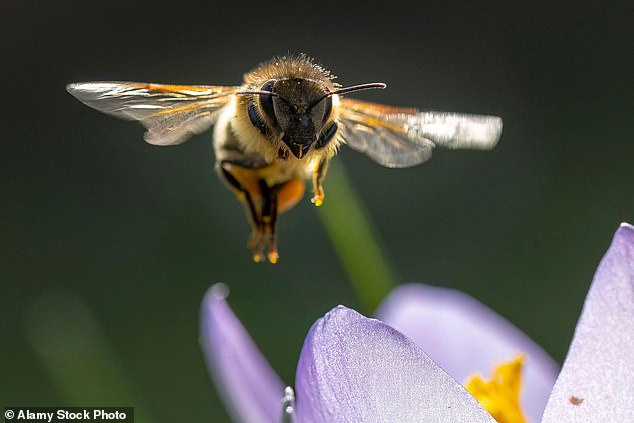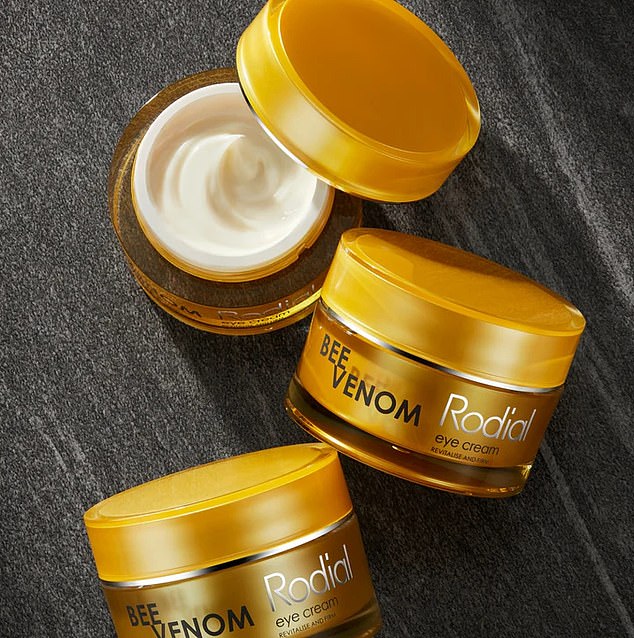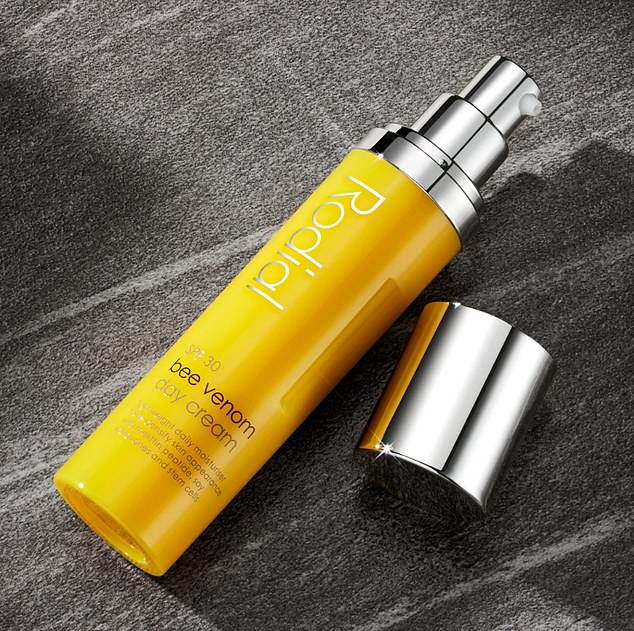Bee venom has become the newest anti-aging component generating excitement in the beauty industry. The main element of the compound, the mel...
Bee venom has become the newest anti-aging component generating excitement in the beauty industry.
The main element of the compound, the melittin peptide, has been found to activate the skin's inherent healing processes by imitating a minor wound, thus stimulating higher levels of collagen, elastic fibers, and hyaluronic acid.
The component has recently drawn the interest of Maria Hatzistefanis, the creator of the skincare company Rodial, who was influenced by the so-called 'Hollywood Bee Facial,' a procedure favored by celebrities for its tightening and lifting results.
Collaborating with researchers, she createdBee Venom Super Serum, which is made using ethically sourced melittin peptides to obtain comparable outcomes without the stinging effect.
As per Rodial, the serum is formulated to 'enhance collagen synthesis, minimize the look of fine lines and wrinkles, and refine and tighten the skin for a more voluminous, supple look.'
Clinical studies indicate that bee venom could live up to its reputation, with research showing that applying bee venom topically can decrease the depth of wrinkles, boost skin elasticity, and increase skin firmness.
In a 28-day study with 23 female participants, a cream containing bee venom significantly enhanced the skin's overall appearance and decreased the depth of facial lines.
A distinct 12-week study involving 22 individuals with crow's feet showed noticeable decreases in 'number of wrinkles, overall wrinkle area, and mean wrinkle depth.'

At the molecular level, melittin starts a precisely regulated biological process that the skin recognizes as a minor wound, activating its inherent repair and renewal mechanisms.
Once applied, it seeps into the skin and connects with fibroblasts and mast cells, producing a small, localized 'sting-like' effect.
This process "quickly enhances blood microcirculation," enhancing the supply of oxygen and nutrients, while prompting fibroblasts to reinforce the skin's structural framework.
As time passes, the skin's base becomes 'thicker and more resilient,' diminishing the look of fine lines and drooping.
Bee venom functions by triggering various important mechanisms in the skin. A specific route signals fibroblast cells to produce additional collagen and elastin, which enhance the skin's firmness and resilience.
Another enhances blood circulation by expanding small blood vessels, aiding in the delivery of oxygen and nutrients for improved tone.
A third causes a slight immune reaction that prompts the skin to begin healing, without leading to actual inflammation.
In essence, bee venom stimulates the skin to regenerate internally instead of merely masking external harm.

Hatzistefanis's formula also includes P-Cell Technology, derived from red pepper stem cells.
This lab-created component is high in antioxidants referred to as phytocomplexes and has demonstrated the ability to enhance protein synthesis within skin cells.
Laboratory tests revealed that P-Cell "almost doubled their protein production within 24 hours," while clinical studies indicated a more than 20 percent increase in skin elasticity after 20 days.
The component is preserved in glycerin, which aids in safeguarding delicate elements such as melittin and marine collagen, maintaining the serum's effectiveness.
In contrast to synthetic peptides, which deliver highly specific messages to particular cells, bee venom functions as an innate biological signal.
Bee venom acts as a natural 'alarm signal,' according to the Rodial R&D team.
It functions by inducing a slight, managed artificial injury, which subtly activates the skin's overall healing mechanisms.
Synthetic peptides, on the other hand, act as 'engineered messengers' that provide cells specific directions, like prompting them to generate additional collagen or ease muscle contractions.

The method used to collect bee venom is intended to be both ethical and environmentally friendly, as stated by the Rodial R&D team.
Bees are prompted to secrete tiny quantities of venom using a glass plate, which is utilized by collectors.
"Since the glass is not skin, their stingers do not become lodged, and the bees remain unharmed and alive," stated the company.
The venom turns into a fine powder, which undergoes purification, filtration, and freeze-drying prior to being examined for quality and uniformity.
Every batch is tested to confirm correct peptide levels prior to being added to the serum.
The Rodial R&D team states that the effects of bee venom skincare appear slowly.
Many users observe an instant lifting and revitalizing effect as a result of enhanced blood flow, with more visible improvements in firmness and skin texture becoming apparent after several weeks of regular application.
After two to three months, clinical findings indicate 'a noticeable decrease in wrinkles and improved skin tightness' with the development of new collagen fibers.
Previously linked mostly to painful stings, bee venom is now gaining recognition as a scientifically supported component in anti-aging studies.
By leveraging the skin's innate regenerative processes, the substance symbolizes an expanding link between science and aesthetics, turning a harmful toxin into a means of restoration.
Read more- Could this cream infused with bee venom be the key to reversing aging and achieving glowing skin?
- What makes Rodial's super serum with bee venom and gold claim to deliver noticeably firmer and smoother skin within a few days? Customers are completely hooked!
- What sets Deborah Mitchell's Gold Bee Venom Mask, known as Camilla's beauty secret, apart as a natural substitute for Botox?
- Can treatments using bee venom effectively repair skin wounds, or do they pose a serious risk?
- Is this peptide serum, often referred to as a Botox alternative, the greatest advancement in skincare for reducing fine lines?



